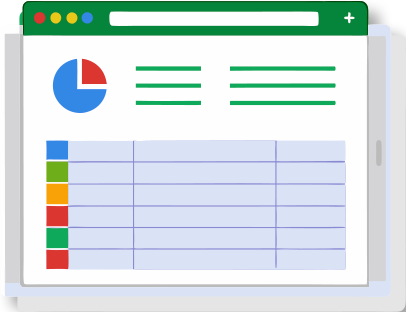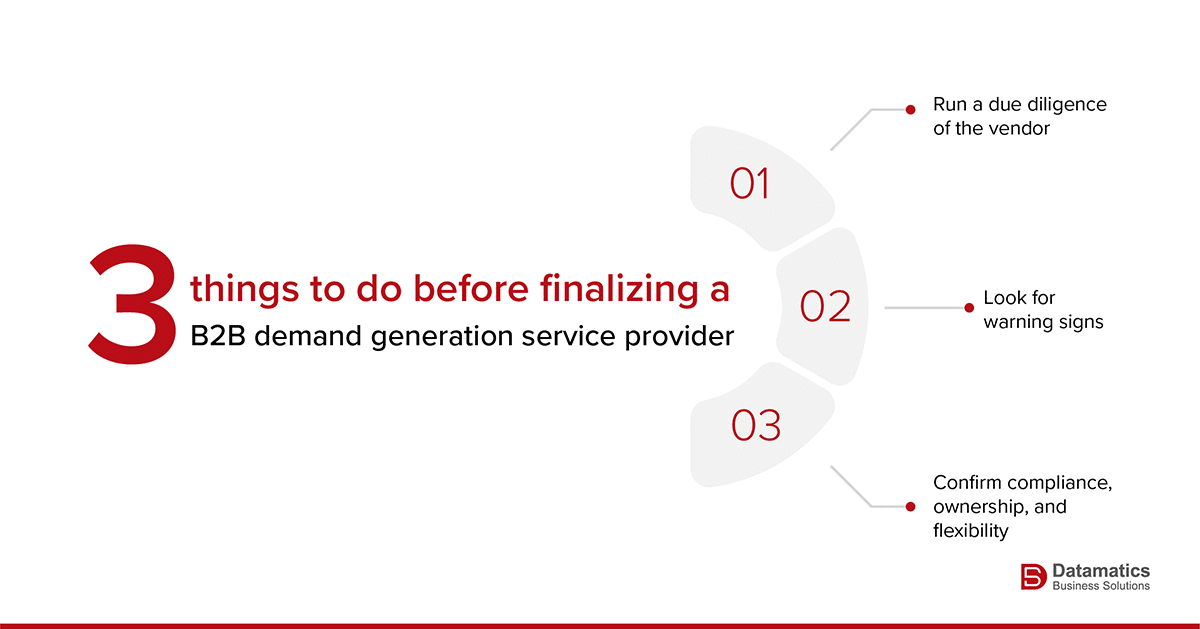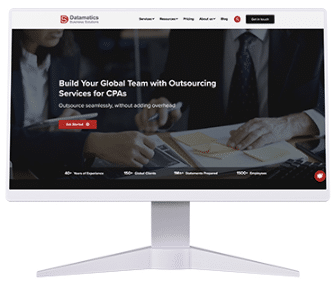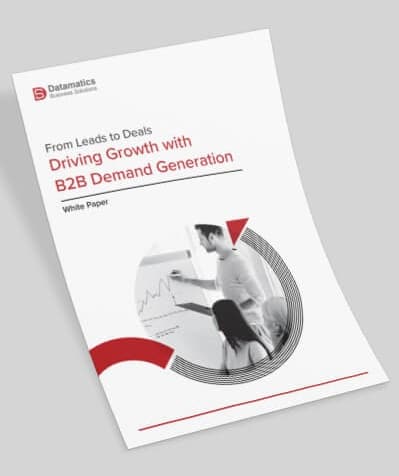On paper, generating demand sounds simple: create awareness, spark interest, and turn it into qualified leads.
In reality, it is a different story altogether. Demand generation is layered, slow-moving, and unforgiving.
Prospects take their time, sales cycles drag on, and even seasoned teams struggle to cut through the noise and reach the right buyers when it matters.
That’s why more B2B organizations are turning to specialized demand generation partners. The right partner doesn’t just amplify your marketing. They bring the data precision, audience insights, and scalable execution that internal teams often lack. They help you move faster, personalize smarter, and convert stronger.
But choosing a B2B demand generation services partner can feel deceptively simple. Everyone claims to have the right data, tools, and expertise. And in the age of AI, everyone promises 100% results.
The key lies in how you evaluate them with clarity, criteria, and a framework that puts results before rhetoric.
This blog unpacks that with some fundamentals. Read along to access a B2B demand generation vendor scoring template to boost your decision-making.
Why Must You Have an Evaluation Framework in the First Place?

Once you realize the imperative of generating demand, the next step is evaluating vendors. And without a structured evaluation framework, you pay for activity, not outcomes.
An evaluation process helps you cut through sales talk and identify partners who can deliver a consistent, qualified pipeline aligned with your revenue goals. Basically, it helps:
- Assess providers on data accuracy, process maturity, and ROI transparency.
- Base decisions on measurable outcomes, not opinions.
- Identify partners who align with goals and scale with your needs.
- Ensure accountability and long-term performance focus.
It shortens vendor ramp time, prevents scope creep, and lets you run compact pilots that validate claims or expose gaps before you commit.
We have put together a framework that can help you shortlist vendors.
B2B Demand Generation Service Providers: 10 Questions to Find The Perfect Partner
Use these 10 questions for evaluating B2B demand generation service providers in the US market (especially if you’re outsourcing).
10 key pointers to evaluate B2B demand generation service providers in the US market
- Assess their industry and buying cycle expertise.
- Validate data accuracy and compliance.
- Evaluate multi-channel execution capability.
- Check measurement and ROI transparency.
- Ensure tech stack integration readiness.
- Review pricing, compliance, and scalability.
- Verify sales alignment and lead handoff.
- Measure ramp-up speed and agility.
- Evaluate support, communication, and reporting access.
- Confirm proof of results and references.
1. Do they really understand your industry, deal size, and buying journey?
Start by confirming if the provider understands your industry and how your buyers make decisions.
- Ask them to explain your sales cycle, deal size, and buying timeline.
- Request case studies from similar industries with measurable results.
- Check for metrics like campaign reach, MQL-to-SQL conversion, and pipeline impact.
- Review how they define your ICPs and buyer personas for accuracy and relevance.
A provider who understands your market can target more precisely, shorten ramp-up time, and align faster with your revenue goals.
Such clarity is the foundation of a strong demand generation strategy built on data and real market insight, not assumptions.
2. How accurate, compliant, and reliable is their data?
Your results are only as good as your data.
Ask where the provider sources, validates, and enriches their leads. Do they combine intent, firmographic, and technographic data to identify genuine decision-makers?
Check how frequently their database is refreshed and whether they comply with GDPR and CCPA regulations.
A credible provider will walk you through their validation steps—verification tools, bounce management, and data aging policies. Clean, compliant data improves deliverability, lowers acquisition cost, and creates more predictable conversion rates.
If their process sounds vague or outsourced, you’re looking at a short-term vendor, not a strategic partner for B2B lead generation services.
You can also read: How Datamatics Accelerates Intent-Based Demand Generation?
3. Can they plan, execute, and optimize campaigns across multiple channels?
Execution capability shows how well a provider can manage the entire funnel.
Verify channels they use—outbound, inbound, paid, social, webinars, ABM, or content syndication. Request examples of how they connect these channels and use engagement data to improve targeting and messaging.
If campaigns run in isolation, results will be inconsistent. Confirm how often they test, retarget, and optimize based on performance.
A capable provider integrates all channels into one demand generation campaign that maintains consistent messaging, improves lead nurturing, and delivers sales-ready prospects.
4. How do they measure, report, and attribute ROI?
Measurement defines credibility.
- Ask for dashboards showing MQL, SQL, and opportunity visibility.
- Check if they track marketing-sourced and marketing-influenced revenue.
- Confirm reporting integrates with your CRM or analytics platform.
- Verify their attribution model (first-touch, last-touch, or multi-touch).
Expect real-time reporting over monthly summaries or static spreadsheets.
Providers who measure what matters give you clarity, predictability, and full control of campaign performance. This is where B2B demand generation evolves from execution to accountability
5. Will their tech stack integrate seamlessly with your existing systems?
Integration determines how easily your teams can collaborate.
Ask whether their tools connect with Salesforce, HubSpot, Marketo, or Pardot through native or API-based integration.
Check how they handle lead scoring, routing, and lifecycle tracking within your environment. If integration relies on manual uploads or disconnected reporting, that’s a long-term operational problem.
An integration-ready provider ensures your systems talk to each other, your data stays consistent, and your reporting remains unified. It saves hours of manual reconciliation and gives leadership real-time visibility into performance.
A well-integrated demand generation strategy enables scalable growth without disrupting your existing marketing workflow.
6. Are their pricing, compliance, and scalability practices transparent?
Transparency is non-negotiable.
Ask for a complete pricing breakdown—campaign setup, data sourcing, execution, and reporting.
- Avoid open-ended “per-lead” quotes without clear qualification criteria.
- Review their compliance certifications: SOC 2, ISO 27001, GDPR, and CCPA.
- Ask how they secure and store lead data, especially if they manage global campaigns.
- Test scalability—can they handle sudden increases in campaign volume or target regions without reducing quality?
The right partner scales predictably—both in performance and cost—and treats compliance as part of delivery, not a checkbox.
Clear pricing, documented compliance, and scalable infrastructure form the foundation of trustworthy demand generation services.
7. How well do they align with your sales team and internal KPIs?
Alignment between marketing and sales decides campaign success. Ask how the provider collaborates with your sales team—from lead qualification to feedback loops.
Do they define MQLs and SQLs jointly with your sales leadership?
Strong alignment prevents lead leakage, improves follow-up speed, and raises close rates. A coordinated B2B demand generation program functions as one revenue engine, not two separate functions.
8. How fast can they launch, adapt, and scale campaigns?
Speed is often the difference between momentum and missed opportunity.
Ask about their onboarding process—how long until the first campaign goes live. Review their average ramp-up time for new clients and new verticals.
Fast-moving providers operate with pre-built workflows, content frameworks, and data validation systems. That operational readiness reduces setup time and allows you to respond quickly to market shifts.
9. What kind of support, communication, and reporting access do you get?
Ask what kind of support you can expect after onboarding.
Will you get a dedicated account manager and regular performance reviews, or just a monthly report? Confirm if you’ll have 24/7 access to dashboards and live metrics.
A responsive provider gives you clarity when campaigns fluctuate and acts before small issues grow into bigger performance problems. Availability, transparency, and real-time access are essential indicators of partnership quality.
10. Can they back their claims with client references and verifiable results?
Always validate claims with data and references.
- Ask for 2-3 client contacts you can speak with.
- Look for consistency between the stories shared and the metrics reported.
A reliable B2B demand generation services provider will never hesitate to connect you with long-term clients. Direct feedback confirms not only performance but also how they handle issues, scale, and adapt over time.
Client validation is often the final proof you need to make an informed decision.
Now that you’ve learnt how to evaluate the perfect B2B demand generation services provider, it’s time to move forward with the decision-making.
Use this Simple Scoring Rubric To Evaluate B2B Demand Generation Service Providers
Once you’ve completed the evaluation, use a scoring system to make the decision process faster and more objective. Give extra weight to data quality, measurement and reporting, and integration readiness. These three factors have the strongest impact on ROI, conversion predictability, and overall pipeline efficiency.
Here’s a B2B demand generation vendor scoring rubric template for you to get started with:
not gut-based decisions.

Once you have shortlisted a few potential demand generation service providers, move from evaluation to validation.
You can also read: Top Demand Generation Trends Leaders Need to Watch in 2026
Key Demand Gen KPIs You Should Always Track
Performance without measurement is guesswork. Tracking the right demand generation metrics helps you understand what’s working and what is draining the budget. Here are some KPIs you can get started with:
KPI | What does it mean? | Why track it? |
|---|---|---|
MQ SQL volume | Number of qualified leads at each stage. | Indicates funnel strength and lead quality. |
MQL → SQL rate | % of MQLs converted to SQLs. | Measures funnel efficiency. |
SAL acceptance rate | % of leads accepted by sales. | Validates lead relevance. |
CPL / CPA | Cost to acquire a lead or customer. | Reveals campaign cost efficiency. |
Pipeline value | Revenue influenced or sourced by marketing. | Shows demand gen’s revenue impact. |
Pipeline velocity | Speed of lead movement through the funnel. | Reflects sales cycle efficiency. |
CAC/LTV | Cost to acquire vs. customer lifetime value. | Assesses long-term profitability. |
These KPIs reflect the quality, profitability, and sustainability of your provider’s performance — not just the volume of activity.
Do This Before Finalizing A B2B Demand Generation Service Provider
Ensure doing the following before finalizing any B2B demand generation service provider:

Ensure doing the following before finalizing any B2B demand generation service provider:
1. Do the due diligence
Before you sign, ask direct, verifiable questions that reveal how a provider truly operates.
- Request a 6-12 month campaign plan with conversion goals.
- Ask for 3-4 case studies with measurable results.
- Review how lead data moves from source to CRM.
- Request attribution models and sample ROI dashboards.
- Ask for a 60/90/180-day onboarding roadmap with KPIs.
- Review SLA terms and remediation policies for missed targets.
The best B2B demand generation services providers will answer these questions with evidence, not generalities, and their documentation will match their promises.
2. Watch out for these red flags before signing.
Some warning signs are easy to spot and impossible to ignore. Here are some warning signs to look out for:
- Avoid vendors who cannot define MQL or SQL criteria clearly.
- Steer clear of those who only report vanity metrics instead of revenue-linked KPIs.
- Reject providers unwilling to show live dashboards or system integrations.
- Be cautious of contracts that lack SLAs, refund clauses, or data ownership clarity.
- If pricing lacks structure or performance linkage, it’s a risk you can avoid.
A strong provider values transparency, not obscurity.
3. Final procurement and contract checklist
Lastly, before you finalize the contract, confirm compliance, ownership, and flexibility.
➔ Request data security and certification documentation—SOC 2, ISO 27001, GDPR, and CCPA.
➔ Ensure full ownership of your data, creative assets, and campaign IP.
➔ Run a 30-60 day pilot to validate actual performance before signing long-term.
➔ Confirm that billing is transparent and tied directly to KPI achievement.
➔ Include escalation paths, SLA definitions, and remediation terms in writing.
➔ Finally, check for scalability clauses that let you expand or pivot campaigns as you grow.
A clean, compliant, and flexible contract sets the foundation for a measurable partnership.
Wrapping Up
zaChoosing the right B2B demand generation services provider isn’t about who promises the fastest results. It entails onboarding a partner who can deliver a consistent, measurable impact.
The right partner will bring transparency in reporting, precision in data, and accountability in execution.
An evaluation framework helps you focus on these fundamentals, turning vendor selection from a subjective exercise into a performance-based decision. By asking the right questions, tracking the right KPIs, and using a structured scoring model, you ensure your investment delivers sustained revenue outcomes—not short-term metrics.
And if you’re curious about a reliable B2B demand generation partner in the US market, Datamatics helps B2B companies build stronger pipelines through verified data, multi-channel campaigns, and transparent, ROI-driven delivery models.
Why is Datamatics Business Solution is the Best B2B Demand Generation Service Provider in the US?
Datamatics Business Solutions enables B2B enterprises to transform lead generation into a predictable, revenue-driven function.
Unlike volume-driven providers, Datamatics focuses on precision, scalability, and measurable outcomes that align marketing and sales efforts for long-term growth. Here’s what sets Datamatics apart:
➔ AI-led targeting: Identifies high-value accounts using firmographic, technographic, and intent-based insights.
➔ Clean, compliant data: Maintains verified, GDPR- and CCPA-compliant datasets for accuracy and security.
➔ Full-funnel execution: Engages prospects through ABM, content syndication, appointment setting, and partner marketing.
➔ Transparent analytics: Provides real-time performance visibility and ROI reporting.
➔ Scalable delivery: Adapts campaign volumes, geographies, and targeting with consistent quality.
➔ Sales alignment: Ensures CRM integration, validated handoffs, and improved close rates.
To learn how Datamatics Business Solutions can help your organization scale qualified demand with measurable ROI, get in touch with the team today. Subscribe to our newsletter and stay ahead of the latest trends and insights.

Carly Jaspan



